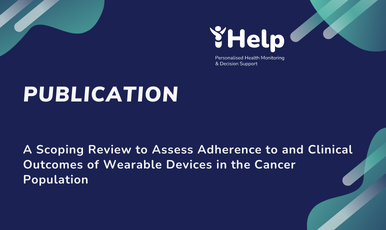Cancers, EISSN 2072-6694, Published by MDPI; Published: 13 September 2022
A Scoping Review to Assess Adherence to and Clinical Outcomes of Wearable Devices in the Cancer Population
Simple Summary
The use of wearable devices in clinical care is gaining popularity among cancer patients. The COVID-19 pandemic highlighted the value of wearable devices for monitoring health. Wearable devices are used to record and monitor real-time data like physical activity, sleep metrics, and heart rate variables. The use of wearable devices can directly impact clinical decision-making. There are few pieces of evidence that prove that wearable could improve the quality of patient care while reducing the cost of care, such as remote health monitoring. The generated big data by the wearable device is both a challenge and an opportunity. Researchers can apply artificial intelligence and machine learning techniques to improve wearable devices and their usage among cancer patients. In this scoping review, we assessed the adherence to clinical outcomes of wrist-worn wearable devices in the cancer population.
Abstract
The use of wearable devices (WDs) in healthcare monitoring and management has attracted increasing attention. A major problem is patients’ adherence and acceptance of WDs given that they are already experiencing a disease burden and treatment side effects. This scoping review explored the use of wrist-worn devices in the cancer population, with a special focus on adherence and clinical outcomes. Relevant articles focusing on the use of WDs in cancer care management were retrieved from PubMed, Scopus, and Embase from 1 January 2017 to 3 March 2022. Studies were independently screened and relevant information was extracted. We identified 752 studies, of which 38 met our inclusion criteria. Studies focused on mixed, breast, colorectal, lung, gastric, urothelial, skin, liver, and blood cancers. Adherence to WDs varied from 60% to 100%. The highest adherence was reported in the 12-week studies. Most studies focused on physical activity, sleep analysis, and heart vital signs. Of the 10 studies that described patient-reported outcomes using questionnaires and personal interviews, 8 indicated a positive correlation between the patient-reported and wearable outcomes. The definitions of the outcome measures and adherence varied across the studies. A better understanding of the intervention standards in terms of the clinical outcomes could improve adherence to wearables.






